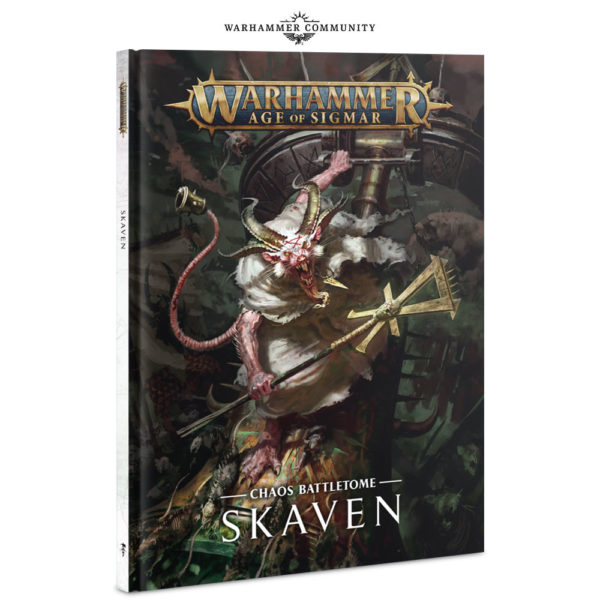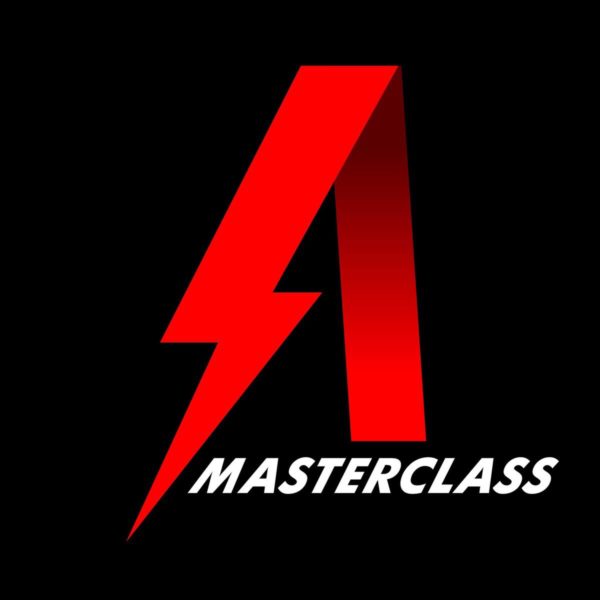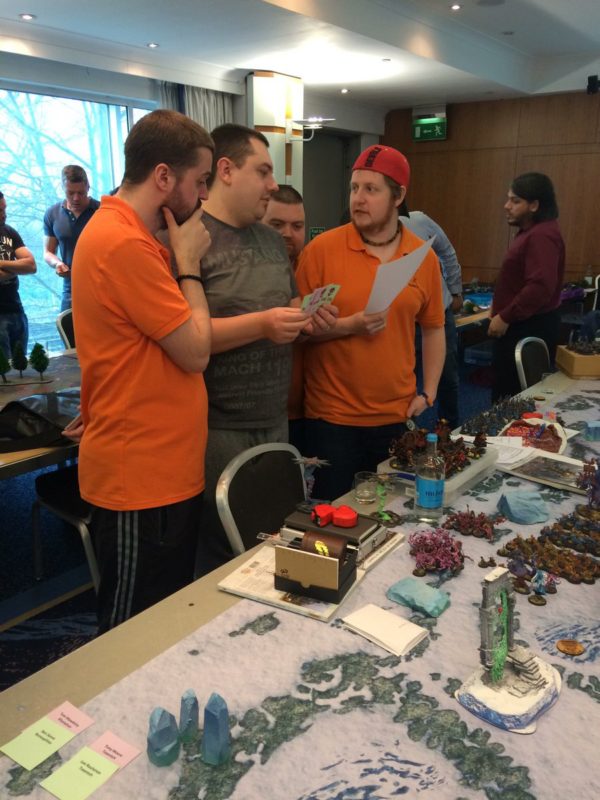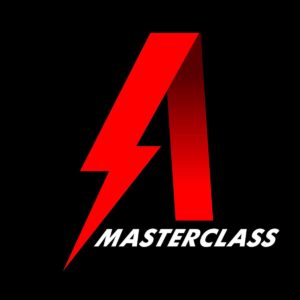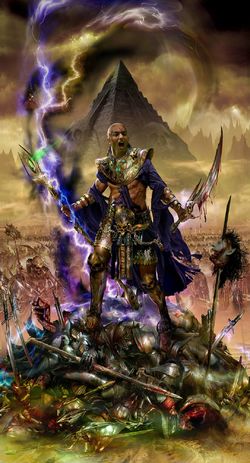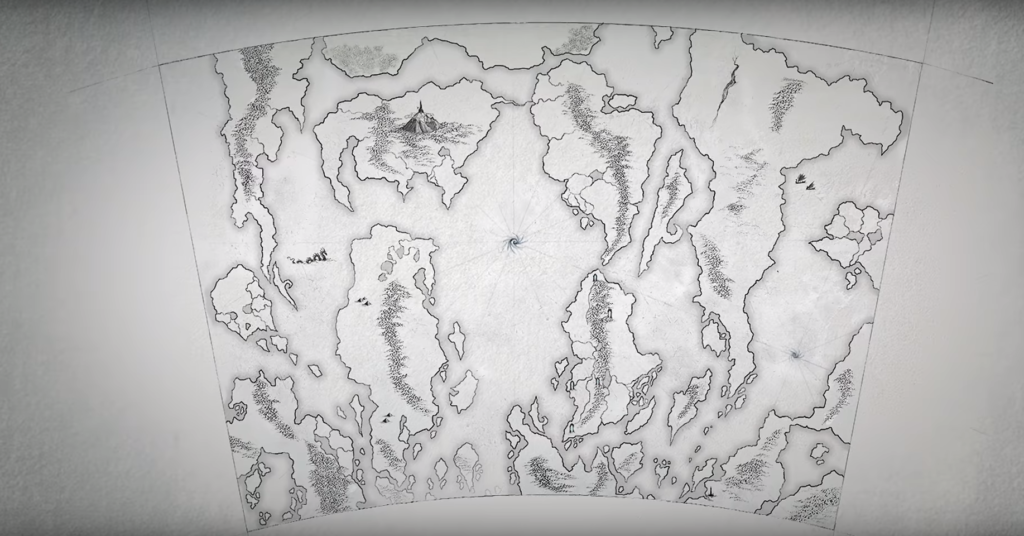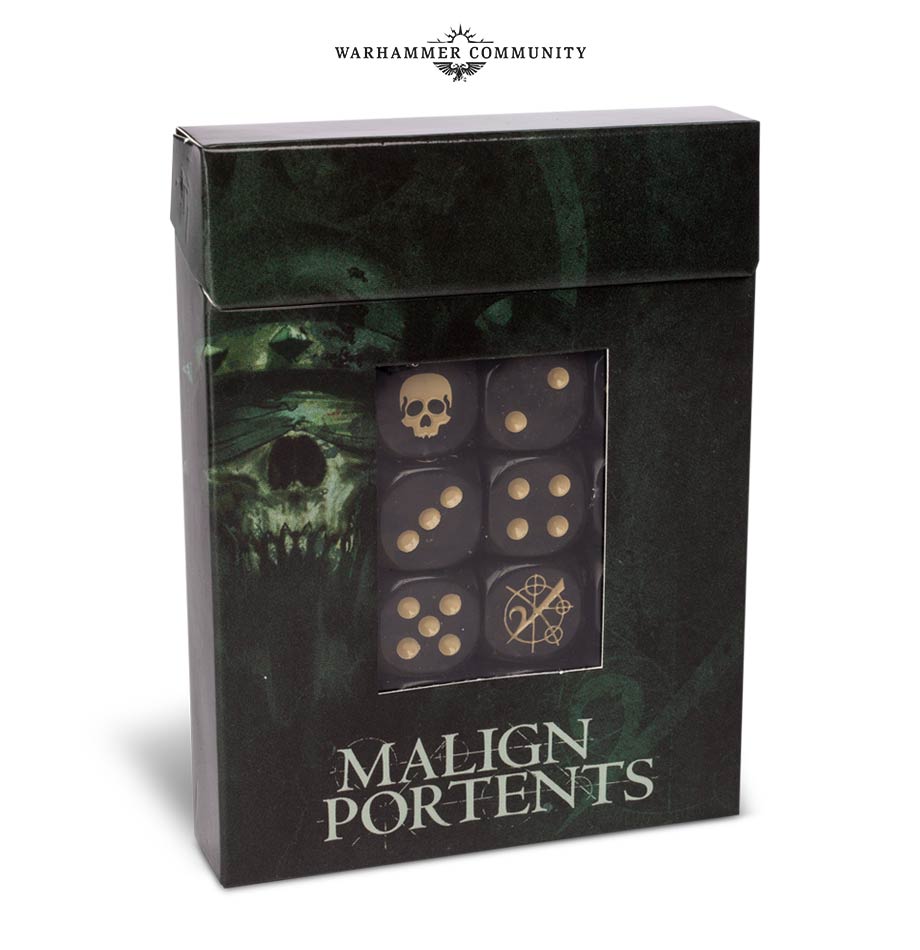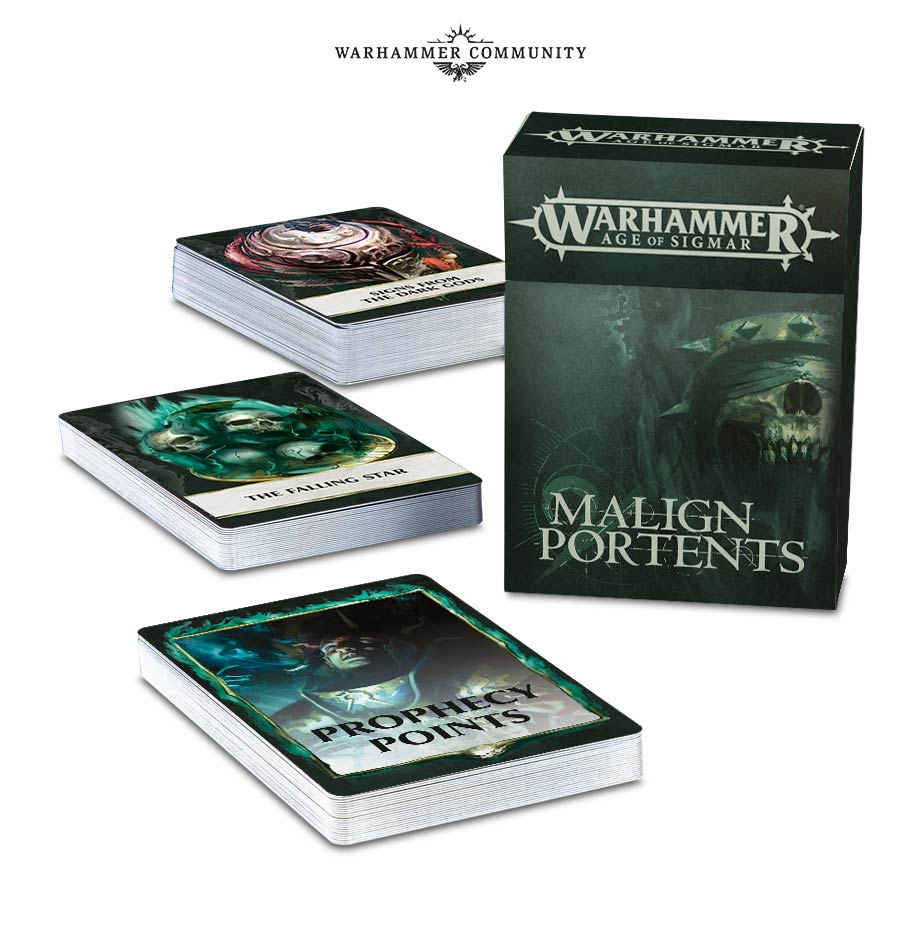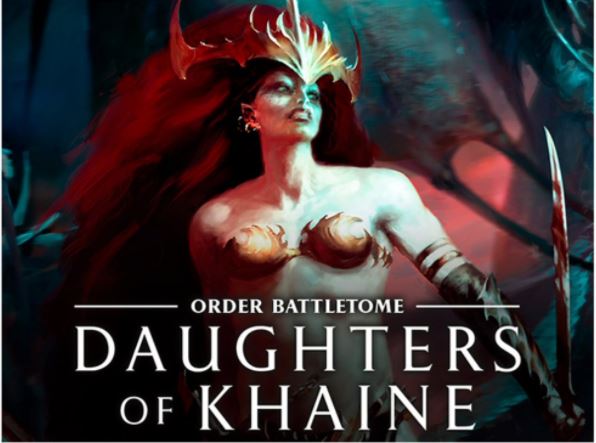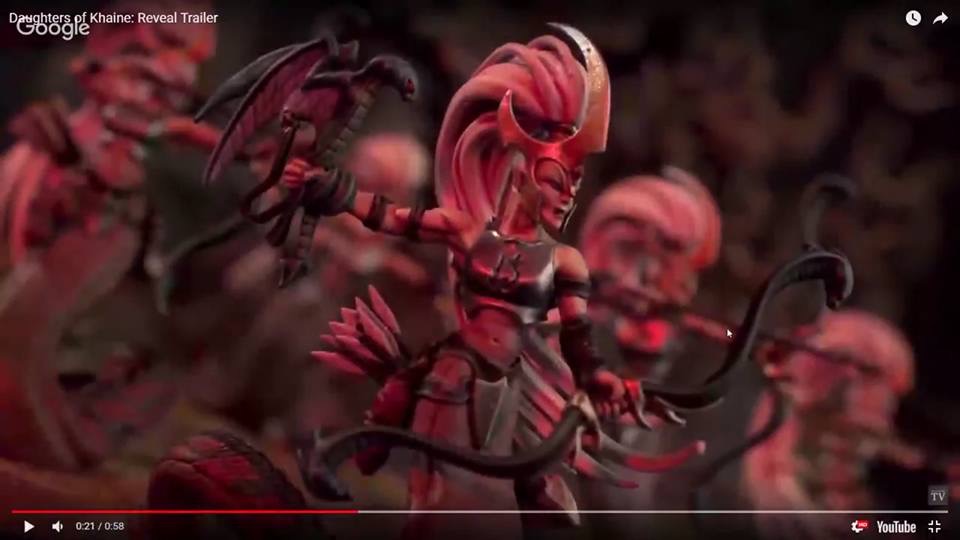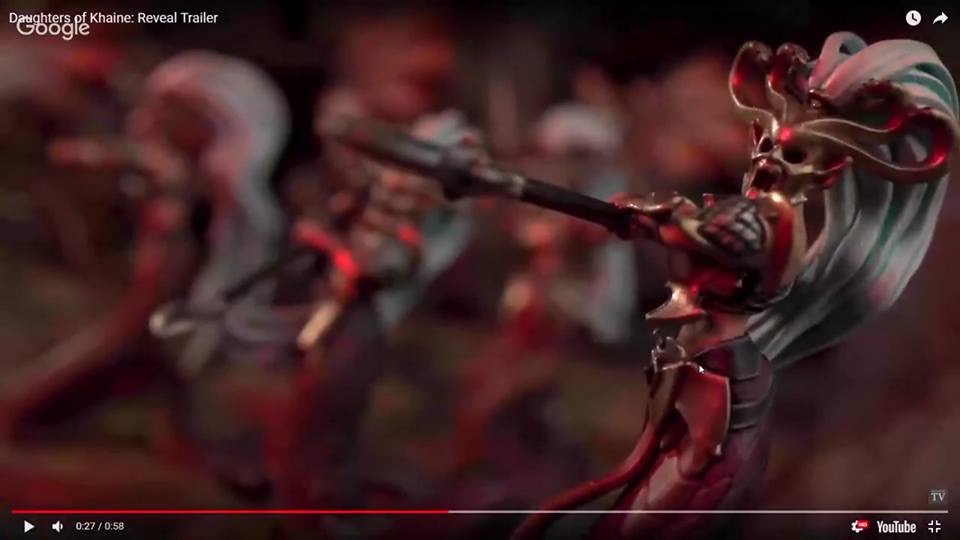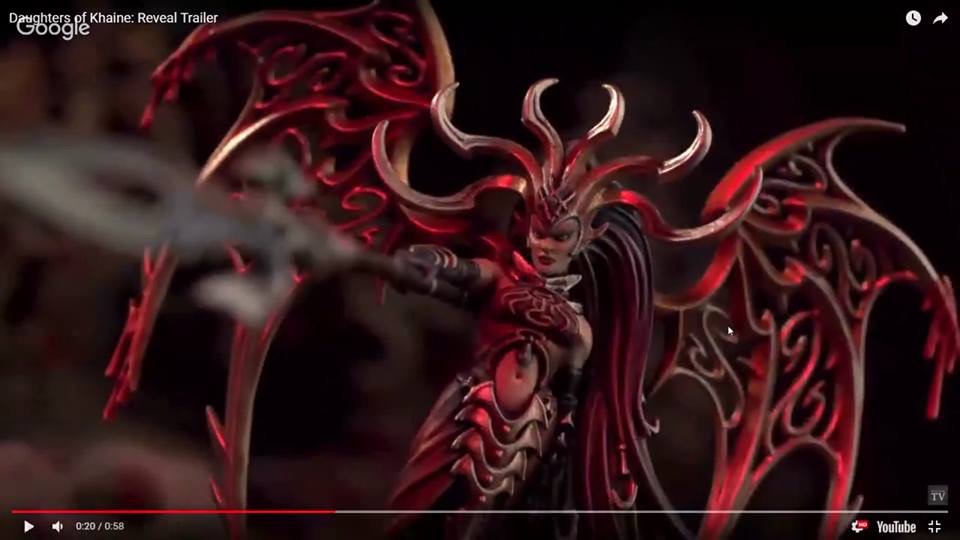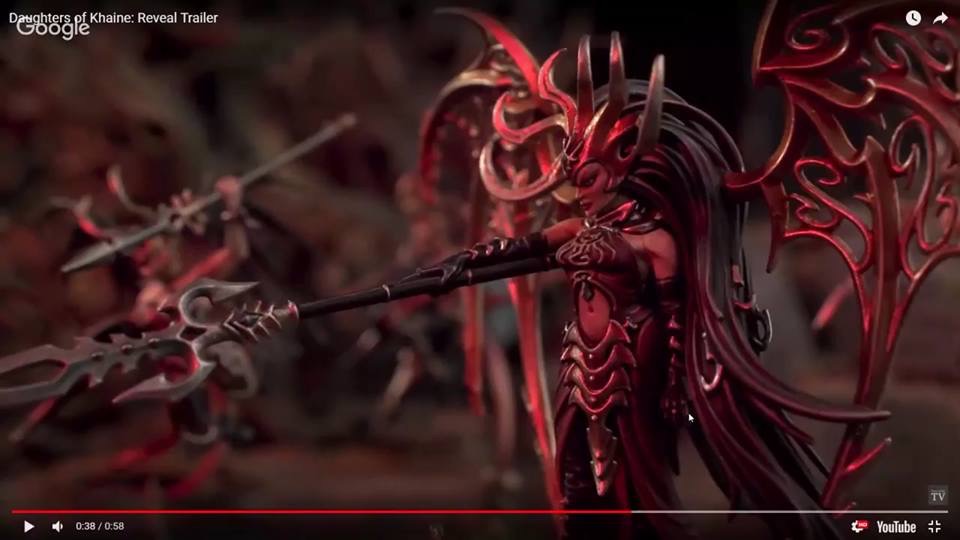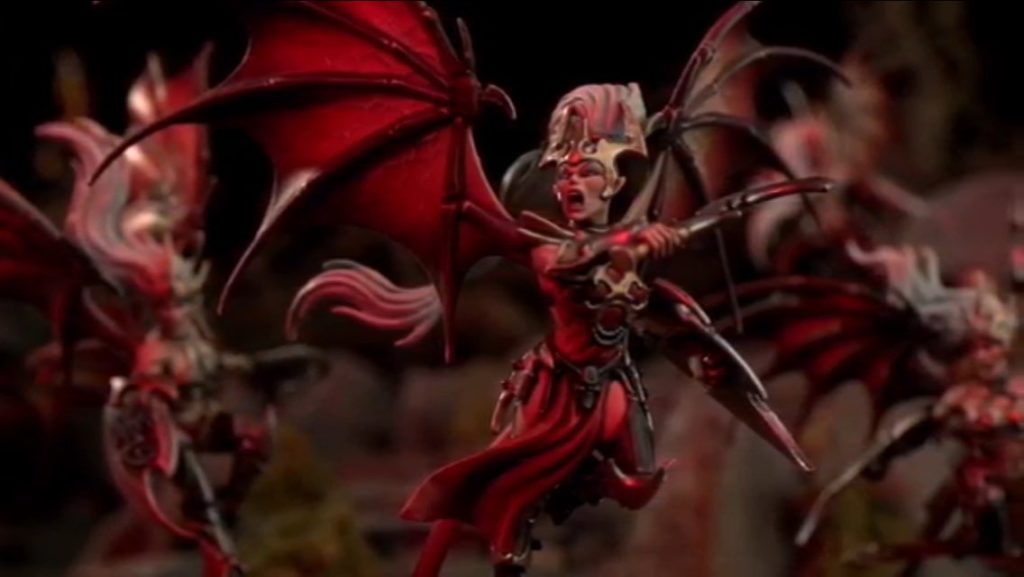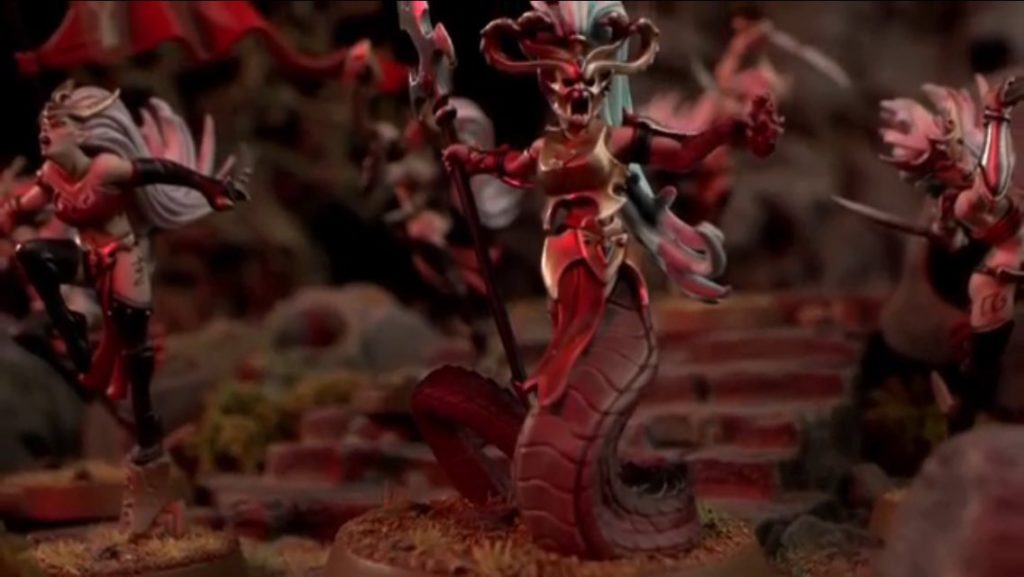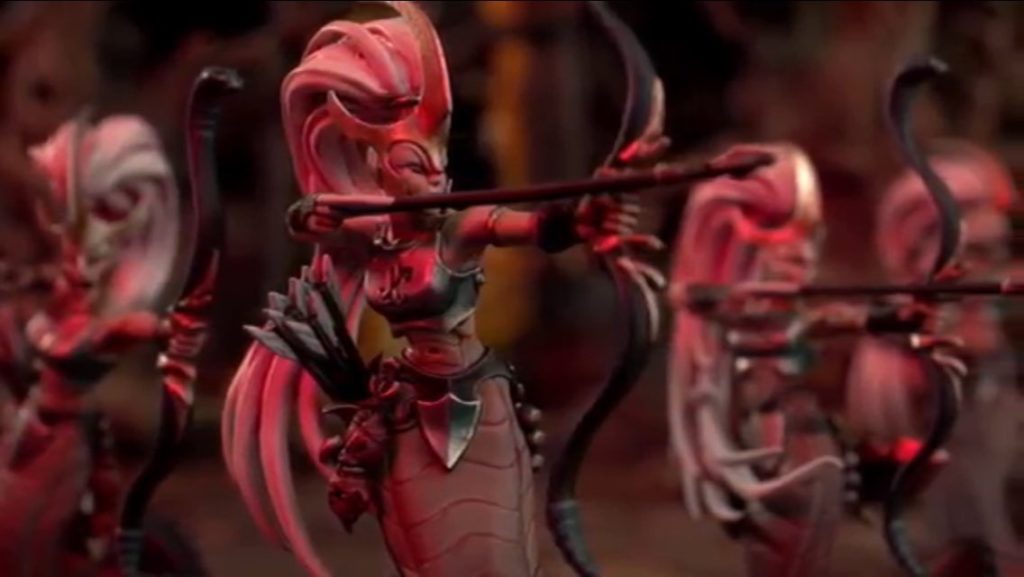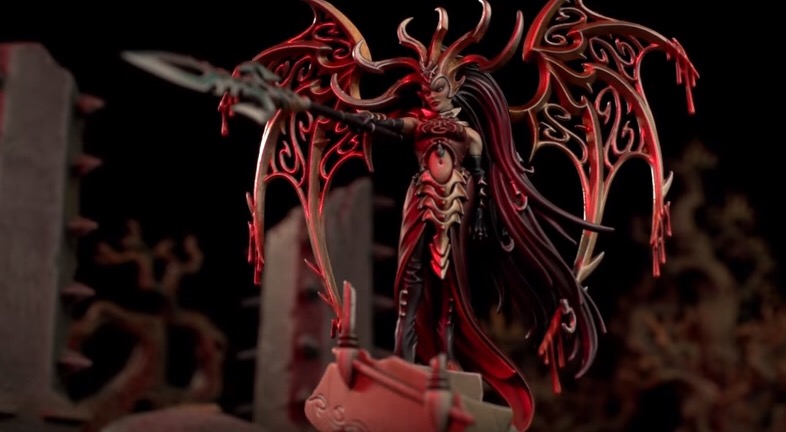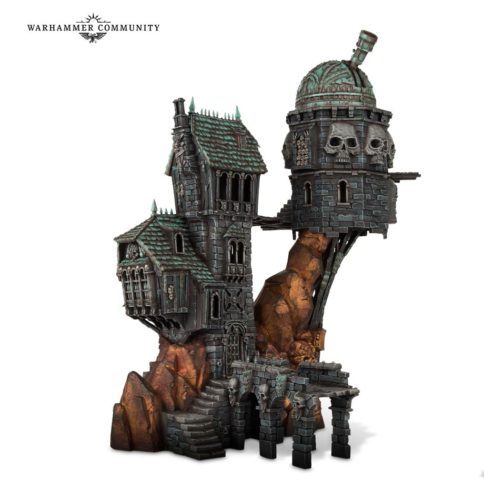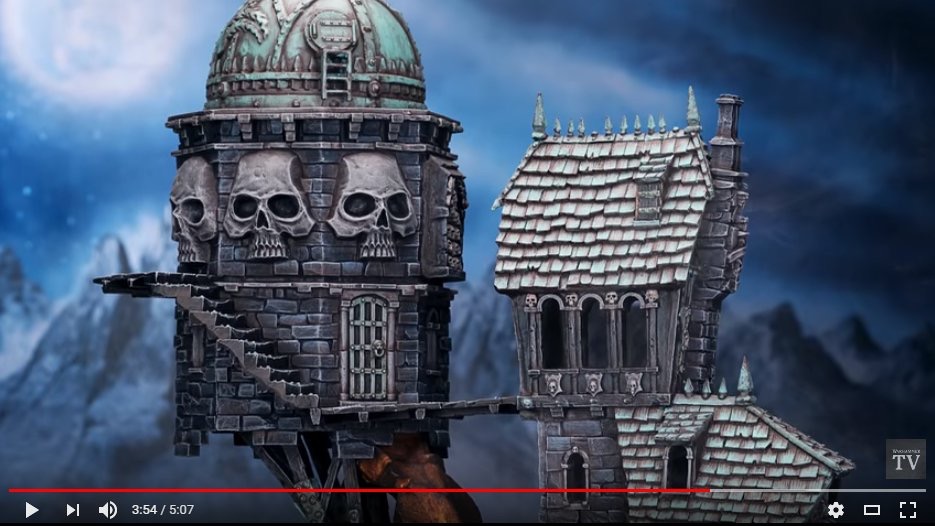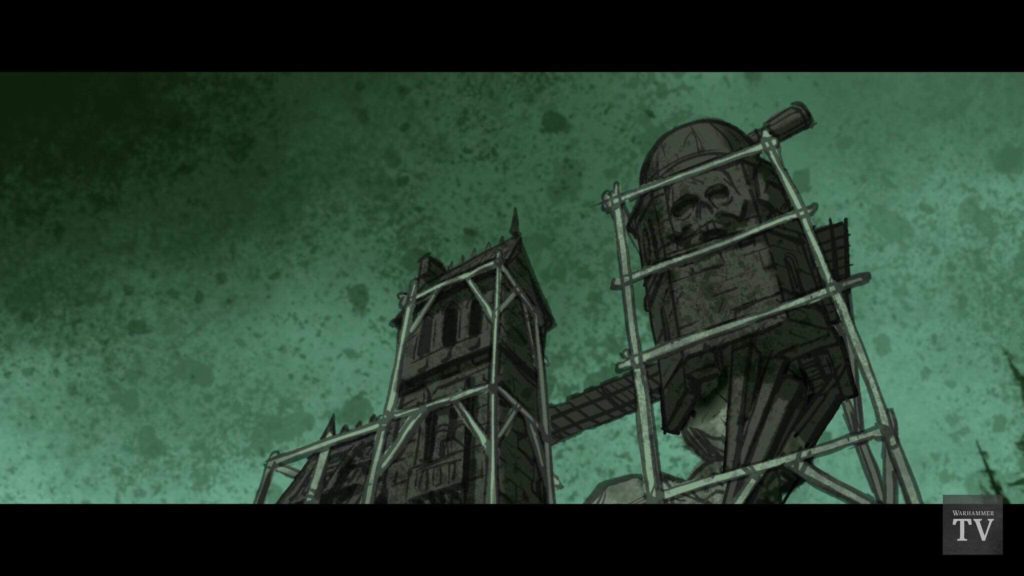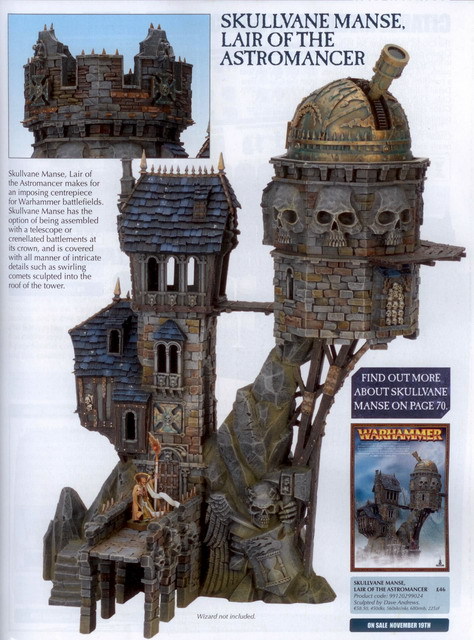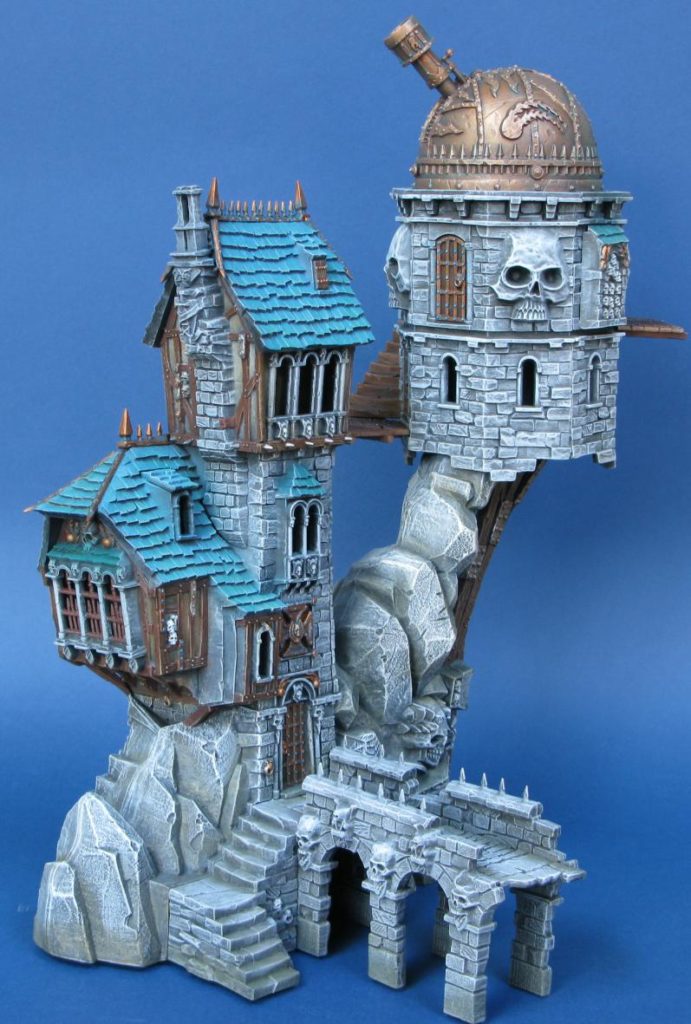The new Skaven battletome has reunited the clans and is likely to prove a defining moment for the future of Warhammer Age of Sigmar. Skaven are unique Games Workshop IP and have always been at the core of the Warhammer world (literally and figuratively). Now they have properly been brought into Age of Sigmar with all the toys of Age of Sigmar Second Edition. As we’ll see, there have been massive changes to both Skaven units’ warscrolls and the surrounding rules and abilities. This army has so many tools available to it that you will easily see it around the top tables at events.
In this post, we break down the book, the allegiance abilities, artefacts, spell lores, battalions and potential army builds. All while picking out our favourite bits. This will only scratch the surface of the book and I’m sure I’ll need to come back and write more on the rats. If you want a warscroll by warscroll breakdown you can check that out here. If you are interested in the other half of the Carrion Empire box-set, you can read my Flesh-Eater Courts battletome review.
Now I couldn’t have done this review without the informed help of two local Skaven experts – Aiden Nicol (unhealthily obsessed with Pestilens) and Julien Lestat (Skryre warlock and 2017 NZ Master).
And, as always, check out Dark Fantastic Mills for great 3D printed terrain perfect for wargaming. Its super versatile and light so worldwide shipping is inexpensive. Use the “aos shorts” discount code for a further 10% off the already decent prices.

Overall assessment on Skaven
So up to this point, Skaven armies at events have either been full Pestilens (having the benefit of a book, plagues and buffed up plague monks) or full Skryre pop-up mortal wound explosion. That Skryre pop-up build is gone and the army is more balanced as a whole as a result.
What does new Skaven look like? Pure Pestilens is definitely viable and has increased in power, mixed lists will be much more common and the army will gain the benefit of its new range of 2-cast spell casters. Masterclan (the Verminlords, Thanquol and Grey Seers) are back with a vengeance and significantly powerful. I expect Skryre will now shift to long-range and support shooting sitting behind the walls of Clanrats and Plague Monks in suitable fashion (although I hear tales of Dan Brewer and Acolytes).
There are so many options in the Skaven book that I’m sure I can only scratch the surface in this review and I look forward to seeing what experienced players like Dan and others do once they have gnawed their way through the whole book and got games in.
The key quick points to note are:
- The book has viable single clan armies as well as viable mixed clan army builds. Unsurprisingly, the battletome does not really have viable single-drop army builds, but you can get reasonably low.
- Skaven are expected to have a defining impact on the meta. The combination of spell-casting, long-range damage, brutal melee damage beasts, significant anti-horde capability and large numbers of bodies themselves mean current successful armies will need to adapt, and you will need to plan to face Skaven at events. Their specific ability will be the potential to neutralise the effectiveness of small buff characters that are so important to some of the top armies (such as Hags, Necromancers, Knight-Vexillor and Branchwraiths).
- Thanquol is now an absolute combat beast against hordes with four warpfire throwers or an effective combined-arms force multiplier with joint shooting and combat options. The difficulty will be getting him in to or close to combat with full health and power. However, he will be a massive threat and distraction piece at 400 points.
- The Verminlord Corruptor is stand-out amazing. At 260 points you get a highly mobile and deadly combat character for hero-on-hero/behemoth combats, a two-cast wizard with an anti-horde spell with substantial mortal wound output. All other Verminlords are now much better. Which is awesome given how cool the models are.
- Warp Lightning Cannons! ZZZZZAP! Points unchanged, more wounds and increased ability to do damage at 24″ with the risk of taking D3 mortal wounds back.
- There are certain Skaven units which are no longer in the Skaven range. In particular, the Deathrunner and the Poison Wind Mortar – both models are no longer produced for sale and no longer have profiles. This reflects Games Workshop’s move to make the game more accessible for new players.
- Another product direction is that unit rules match the options available in their plastic kit. For instance, you used to be able to equip Stormfiends within the same unit with identical weapon options, despite only one of each being available in the kit. This led to people paying large amounts for spare parts for popular powerful options or custom-building their own to make up for the absence of parts in the kit. Now the Stormfiends’ rules have changed so that you can only have one of each of the various options in the kit. This is main reason for the death of the Skryre pop-up build.
Allegiance abilities
In this section, we’ll go through the extensive options of the new Skaven battle and command traits. There is now so much choice for a Skaven general.
Battle Traits
Battle traits are divided into two sections. The first – the Teachings of the Horned Rat – comprises 4 traits/rules that apply to all Skaventide units. The second – the Ways of the Great Clans – comprises 6 traits/rules, one for each of the clan, which apply just to the units with the relevant clan keyword.
While you will need units from that clan to use the rule, many of the rules have a wider, greater impact on your army. For example, a single Grey Seer can generate extra command points using Skilled Manipulators from Masterclan, and a Plague Furnace will bring the Echoes of the Great Plagues to buff Clanrats. Therefore, there are incentives to taking a mixed clan Skaven force.
Teachings of the Horned Rat
The Teachings of the Horned Rat provide a collection of thematic rules for Skaven armies.
- Lead from the Back allows Skaventide heroes (that aren’t monsters) to benefit from Look Out Sir! In combat as well as from missile weapons.
- Scurry Away allows Skaventide heroes to disengage from combat and retreat when they are activated in combat.
- Overwhelming Mass gives units of 20 or more models +1 to hit and 30 or more models +1 to wound as well.
- Strength in Numbers adds 2, instead of 1, to the Bravery characteristic of Skaven units for every 10 models in the unit.
Ways of the Great Clans
The Ways of the Great Clans are available for Masterclan, Moulder, Eshin, Verminus, Skryre and Pestilens units. They work in a similar way to the battle traits in the Beasts of Chaos book in that clan units in a mixed clan Skaven army will still have the benefit of their battle traits.
- Masterclan “Skilled Manipulators” – every time a Masterclan model uses a command point, on a 5+ you get an extra command point.
- Moulder “Prized Creations” – at the start of the first battle round, each Master Moulder can pick a separate Hell Pit Abomination or Brood Horror and add D3 to its Wounds characteristic. That monster can also re-roll hit rolls of 1 for its melee attacks.
- Eshin “Masters of Murder” – your Eshin heroes can pick an enemy hero at the start of the battle and you get to re-roll wound rolls for all attacks made by any Clan Eshin unit against the chosen enemy hero.
- Verminus “Mighty Warlords” – you can pick 1 unique command trait for each of up to 6 Clawlords (no doubling up your picks).
- Skryre “Warpstone Sparks” – if you have Skryre heroes, you can generate D3+3 warpstone sparks at the start of the battle. These can be used throughout the battle to do the following, however you can only use 1 spark per phase.
- In the hero phase – re-roll casting, dispelling and unbinding rolls for a Skryre wizard until the end of the phase (useful for crucial times). At the end of the phase, roll a dice and on a 1, the wizard takes D3 mortal wounds.
- In the shooting phase – pick 3 different Skryre units within 13” of a Skryre hero. Add 1 to the Damage characteristic of missile weapons used by those units until the end of the phase. Again roll a dice at the end of the phase and on a 1 the hero takes D3 wounds.
- In the combat phase – re-roll hit rolls for the Clan Skryre hero. Again on a 1, D3 Mortal Wounds.
- Pestilens “Echoes of the Great Plagues” – the Great Plagues are bonus effects that occur if the unmodified prayer roll for a Pestilens Priest is a 6. If you roll a 6, you can pick 1 of the following Great Plagues (to be resolved in addition to the normal effects of the prayer). Each Great Plague can only happen once per game, and you can also only have one Great Plague per turn.
- Bubonic Blightplague – sets off a chain of mortal wounds between nearby enemy units, jumping from one to the next.
- Crimsonweal Curse – does 1 mortal wound a turn to the target unit, slowly chipping away at a key hero for instance.
- Redmaw Plague – allows you to take over an enemy hero in certain circumstances and use it as your own until the end of the combat phase.
- The Neverplague – re-roll prayer rolls for all Pestilens priests for the rest of the battle.
- Undulant Scourge – pick an enemy unit and roll 1 dice per model in the unit, 5+s are mortal wounds.
Command Traits
Skaven generals have access to 3 common command traits. In addition. there are 3 unique command traits available to each of the 6 Skaven clans.
The shared command traits are:
- Re-roll wound rolls of 1 for the general’s melee attacks
- An ability to bounce wounds or mortal wounds onto nearby Skaventide units
- +1 to the Bravery characteristic of friendly Skaventide units wholly within 18” of the general
Of the unique command traits, my picks are:
- Masterclan – Master of Magic: once per hero phase, add 1 to casting, dispelling or unbinding rolls for the general. Although, the command point stealing and generation abilities are also attractive.
- Skryre – Overseer of Destruction: At the start of your shooting phase, pick up to 3 friendly weapons teams wholly within 13” of the general. Re-roll hit rolls for those units until the end of that phase. The Deranged Inventor does something similar but you select 1 Skryre unit (of any type).
- Pestilens – Master of Rot and Ruin: Reroll all failed prayer rolls for the bearer. Pretty neat on a Verminlord if they have the Liber Bubonicus to let them pray. Pretty amazing on a Plague Furnace with Liber Bubonicus as they pray twice and reroll all fails.
- Verminus – Brutal Fury: Once per battle, at the start of the combat phase, you can add 3 to the Attacks characteristic of this general’s melee weapons until the start of that phase.
- Moulder – Moulder Supreme: When you use the Prized Creations battle trait and pick 1 friendly Clans Moulder Fighting Beat model for this general, you can either add 3 to that model’s Wound Characteristic, instead of D3, or add D6 instead of D3. A nice little gamble there.
- Eshin – All are pretty thematic. Unrivalled Killer gives re-rolls to hit against the targeted hero, Incredible Agility which allows the general to fly and Shadowmaster allows the general to be invisible to units over 6” away if the general is hugging terrain.
Building a Skaven army
The Skaven book makes heavy use of the conditional “battleline if” formula for building armies. Clanrats are generic battleline, Stormvermin are Skaventide battleline and then there are a range of other options depending on your army build. However, most of these require you to pick an entire army from a single clan (no issue for Pestilens, bad for Eshin) with the only allowed exception being to take a Masterclan general.
- Moulder: Giant Rats and Rat Ogors
- Eshin: Gutter Runners and Night Runners
- Pestilens: Plague Monks and Plague Censer Bearers
- Skryre: Skryre Acolytes and Stormfiends
Artefacts
The Skaven battletome also has 6 artefacts available for each of the different clans. These are unique to each clan and give you a massive 36 options to choose from. Note the artefacts are just dependant on the keyword of the hero, so you don’t need to have a full Pestilens army to put an artefact on a Plague Priest or an Eshin artefact on an Assassin. Our picks are:
- Masterclan – Suspicious Stone: a wound and mortal wound save on a 5+ for a series of units who already have something similar, turning your average Screaming Bell into a mobile fortress. The Verminlord Warpseer will be a tank.
- Skryre – Vigordust Injector: Pick a SKAVENTIDE unit wholly within 12”, it adds 1 to all hit and charge rolls this turn, at the cost of d3 mortal wounds at the start of your next hero phase. This bad boy is a returner with a tweak, it used to only target SKRYRE units. Now this can hit Plague Monks, Rat Ogors and even other Verminlords. Cheeky.
- Pestilens – Blistrevous, the Living Cyst: Add 2” to the bearer’s move, and reroll all failed hit rolls. From the second battle round onwards, it shifts to any Pestilens hero within 13”, even if that hero already has an artefact. Verminlord Corruptor with Sword of Judgement being passed this little trinket by a Plague Priest at the start of turn 2? It’s more likely than you think.
- Verminus – Rustcursed Armour: Reroll save rolls of 1 for the bearer. Furthermore, if an enemy hero within 3” of the bearer at the start of the combat phase has an artefact of power you can roll 3D6. On a 13 that artefact is destroyed and its effects are lost for the rest of the game. Neat on a Verminlord Warbringer, who will have many heroes equipped with artefacts being sent to try and manage him (regardless of how slim your chance of actually rolling that 13 is (9.7%)).
- Moulder – Snap-Snap Snarepole: Start of each combat phase, pick an enemy model within 3” of the bearer. That combat phase they subtract 1 from hit rolls. Good for managing hero and behemoth models, just remember you can’t hit a whole unit with it.
- Eshin – Gnawbomb: Pick a terrain feature within 6” of the bearer. Until the next hero phase it gains all the scenery rules of the Gnawhole Skaven terrain in addition to its own rules.
There are also a myriad of Realm artefacts which will be useful for Skaven armies and I’m sure many great combinations to be had. Unfortunately, given the amount of information in the Skaven book, I just haven’t had a chance to sit down and crunch through it.
Spell Lores
Skaven have a total of 9 spells available to the army, as well as 3 Skaven Endless Spells. There are 6 spells of Ruin. These are exclusive to models with the Grey Seer keyword, while the spells of Warpvolt Galvanism are exclusive to Clan Skryre. Our picks of the bunch are:
Lore of Ruin (Grey Seers)
The Lore of Ruin is just so good it is hard to pick! However, they are mainly short range (one at 6”, 4 at 13” and 1 at 26”) so you need to make sure your Grey Seers are in the right positions and well-protected (or able to Gnawhole away to safety).
- Skitterleap: The iconic Verminlord Deceiver spell can now be taken by any Grey Seer, though it’s had some tweaks. It’s cast on a 6 and you can pick 1 friendly Skaventide hero (with a Wounds characteristic of 12 or less, yes Verminlord, no Thanquol) within 13” of the caster and visible to them. Remove that hero and re-set-up the hero anywhere on the battlefield more than 9” away from the enemy. Still so useful.
- Death Frenzy: Cast on a 7 (not hard in Skaven). Pick a friendly unit within 13” and, until your next hero phase, when a model in that unit dies (from anything, combat, shooting, magice etc) that model can immediately pile in and attack. Incredibly useful for units like Plague Monks with a lot of attacks but that will die in droves due to a weak save.
- Both Scorch (cast on a 5) and Plague (on a 7) can do great damage to hordes. For both spells you pick an enemy unit within 13” and roll a dice for each model in the unit. With Scorch, 6s are mortal wounds, with Plague 5+s are.
- Finally, Warpgale (8 to cast) has a great range (26”) and allows you to do D3 mortal wounds to a unit, but more importantly any run or charge rolls for that unit are halved until your next hero phase. AND the unit can no longer fly. Bam!
Lore of Warpvolt Galvanism (Skryre Wizard)
In the Skryre lore, my favourites are:
- Chain Warp Lightning (cast on 6): D6 Units within 18” take 1 mortal wound. Fantastic for spreading mortal wounds across a large amount of mass units and heroes.
- More-more-more Warp Power (cast on a 7): If successfully cast, pick 1 friendly Skryre unit wholly within 12 of the caster that they can see. Re-rpoll hit and wound rolls for that unit until your next hero phase. That unit takes D3 mortal wounds at the end of your next hero phase. Great for when you really need something to die and you need your Skryre warmachine to work!
Skaven Endless Spells
As with all new books, Skaven got three race-specific Endless Spells: Vermintide (a predatory board control wall which Skaven units can ignore), Warp Lightning Vortex (mortal wounds and movement restriction) and Bell of Doom (an Inspiring Presence bubble that might occasionally do some mortal wounds).
Both Vermintide and Bell of Doom look great value at 40 points. The Vermintide offers you a lot of movement control and some cheeky mortal wound output to enemy units (with no risk of getting hurt yourself). The Bell of Doom covers a gap in the Clan Verminus and Clan Moulder lists by giving battleshock protection. Other clans have their own ways of mitigating bravery or are too mobile to make effective use if the Bell. At 100 points, I had initially dismissed the Warp Lightning Vortex – however, several people I trust have suggested I reconsider. Seems it may be quite viable even at 100 points.

Generic Endless Spells
If we have a quick look at which generic Endless Spells will benefit Skaven armies.
- Spell Portal will help with overcoming the generally short range of Skaven spells (like Dreaded Thirteenth Spell)
- Aethervoid Pendulum is always a good pick for damage output with little downside (and thanks to casting buffs inside the Skaven army will not be too hard to cast)
- Chronomantic Cogs will help those big blocks of Skaven get across the board quickly to establish board control.
- Geminids complements the armies ability to threaten low wound buff models from other armies as well as the always reliable -1 to hit.
Gnawholes
Movement in Age of Sigmar is arguably the most important of all attributes. Gnawholes are the Skaven race-specific terrain piece and they come in threes. They are tunnels through reality that allow Skaven units to move around the Realms, and now the tabletop. They provide Skaven with board control and presence potential.

Setting up Gnawholes
After territories have been chosen but before armies are set up, you can set up your Gnawholes:
- wholly within 8” of the battlefield
- more than 3” away from enemy units or objectives
- more than 1” away from any other terrain features
If both players can set up army-specific terrain, then you roll off and the winner chooses the order that the terrain is set up.
How Gnawholes work
At the start of your movement phase, you can use one Gnawhole to transport 1 friendly Skaventide unit. That transported unit must be wholly within 6” of the Gnawhole, and a friendly Skaventide hero must also be within 6” of the Gnawhole. You can then set up the transported unit wholly within 6” of a different Gnawhole and more than 9” away from enemy units. That counts as the move for the transporting unit in that movement phase.
The Gnawholes also count as Arcane for Skaventide units (useful for all the Skaven casting) and also add 1 to the prayer rolls for Skaventide priests. Enemy units count them as Deadly terrain.
Making the most of Gnawholes
Given the set-up restrictions on Gnawholes, I expect we will see people using Gnawholes in their own backfield in order to support their own casting and move crucial support heroes where they are needed late game. You could place one in your enemy’s deployment zone in order to divert some of their resources to keep it occupied. Finally, there is an Eshin artefact (the Gnawbomb) that allows you to turn another piece of normal terrain into a Gnawhole. This would allow you to create a Gnawhole nearer to the centre of the board and objectives.
Skaven Clan Run-down
Ok, now let’s check in with each of the Skaven clans and how they are sitting with the new battletome.
Clan Pestilens
The dark mirror of Clan Verminus, Pestilens is a horde army that trades the durability and discipline of the warlord clans for total destructive power at the cost of basically no survivability. Powerful support heroes back up a swarm of cheap bodies that with the right support can put out more damage than anything else in the book. An army not for the faint of heart, Pestilens rewards a willingness to commit 100% to every engagement just as well as it punishes any attempt at restraint. The Clans Pestilens are willing to pay for their victories with the blood of every last rat to don the cloth, the Great Corruptor cherishes no soul that does not fall to him in the pursuit of bringing about the Final Rotting. A Pestilens army can take many forms, but against them one can expect to see large Plague Furnaces surrounded by Plague Monks pushing them into combat, their support Plague Priests running up alongside the rest of the army keen to bring their deadly plague magic to bear.
Clan Moulder
Skaven artwork often depicts the Skaven soldiery fighting even as they half-wade through a tide of mutated rats swarming down across the enemy. You know have the power to BE that horrifying horde of biological monstrosities. Forged in the disgusting lairs of twisted scientists freed from petty mortal constraints of right and wrong, terrible creations of flesh, blood and warpstone drag themselves from the hell-pits to lay waste to the Mortal Realms in the service of the highest bidder. A Moulder army is all about swarming the table with cheap annoying rats while your hulking abominations march across the table, whipped into battle by Master Moulders and their Packmaster subordinates who oversee their twisted creation’s devastating effectiveness in battle… from a safe distance.
Clan Moulder is now a viable standalone army should you wish to run a tide of mutated rats at the enemy.
Clan Verminus
While bravery and discipline are rarer than honor and integrity in the dark places under the earth, rats have ran in packs for longer than even the Skaven have walked on two legs. Clan Verminus make use of that self-same mentality, massing Skaven into rank and file and putting their fragile pack mentality to deadly use. Ferocious Clawlords herd ranks of ill-equipped Clanrat infantry into the enemy, goaded on by the lethal Stormvermin elite and watched for signs of cowardice by their Verminlord Warbringer masters, horrifying rat-warlords from beyond the veil of reality and sanity. An army given to large numbers of quality (as far as one expects from a rat in rusted armor) infantry, Clan Verminus fight always in close combat, their abilities favoring mass charges like the Clans Pestilens, but with a dogged sense of self preservation that will see them cut and run to more favorable engagements with the turn of the tide. Discretion as ever, is the better part of valor.
Clan Skryre
Skaven with a predilection for fearsome displays of technological supremacy, Clan Skryre are just at home spraying the enemy at range with scintillating magical fire that consumes all in it’s path as they are driving enormous weaponized wheels directly into the thick of combat. Less given to enormous hordes, Skryre’s “infantry” are hulking monsters armed with the most deadly technology possible and well armed bombardiers armed with toxic gasses. A Skryre army trades numbers for overwhelming firepower and nightmarish shock infantry. Playing Skryre is all about embracing the “shock and awe” of mad science, embracing the fact that you are likely to lay half as much devastation at your own feet as you do the enemy, with most Skryre units having the ability to massively overload their potential… with no small risk. But the lives of rats are cheap, and there is always more besides. The Skryre Arch-Warlocks know that no life (save their own) is priceless in the cause of ultimate victory and discovery.
Clan Eshin
Striking from the shadows to lay the heads of the enemy at the feet of their allies, the Clans Eshin are the masters of the shadowed way, the skitterleap, and the blades in the dark. Favoring a unique playstyle that values hit and run combat and heroes ambushing from the centre of seemingly diminutive ranks of infantry to sink as many throwing stars, knives and punch daggers as possible into the enemy general before disappearing into the shadows. An Eshin army fights on the move, hurling waves of throwing weapons and harassing the enemy until they are ready to close the distance and cut the head from the enemy army in one sweep.
Potential Skaven Army Builds
The Skaven army presents a number of viable options for budding Skaven generals – whether magic heavy, Moulder rat swarms, Pestilens Plague Monk combat and magic builds, or straight mixed arms armies which can do a bit of everything. I’m not going to try and prescribe or pick any of these as a winner at this stage (unlike with the Flesh-Eater Courts book where I felt more comfortable to make a call). However, there are a number of viable components which we can go through.
Skaven Battalions
The Skaven battletome has 8 battalions in it. There is a large mega battalion for Clan Pestilens (made up of 2-3 smaller battalions) and other battalions for Skryre, Verminus, Moulder and Eshin (similar to the old large scale Clawpack battalions). Skryre’s battalion is unique in that it allows you to choose 2-5 Enginecovens (collections of Skryre units) to unlock certain Skryre abilities. As such, the battalions are all frameworks for building armies around for players interested in (largely) focusing on a single clan.
While these battalions fit a rather large number of units, comparatively to other recent books, they are light on heroes. And Skaven armies need support heroes to maximise the ability and efficiency of the main units. Therefore, I expect Skaven armies will be low-drop, but there won’t be any easy one-drop armies around. One-drop armies are truly a thing of the past (just wait for the next Sylvaneth battletome).
Some likely popular battalions are Clawhorde, Congregation of Filth and the Fleshmeld Menagerie.
Clawhorde
If you are willing to paint a lot, lot, lot of models (it’s a lot), this is for you. The quintessential Clan Verminus battalion takes a Clawlord, some Stormvermin, and more Clanrats than one could shake a Thing-Catcher at. The bonus for this is that the Clawlord’s command ability affects all eligible units within range of it, rather than just one. This battalion will turn your Verminus army from a 15 drop list to a 5 or 6 drop list, nothing to shrug at and create a solid bunker which, if equipped and marshalled properly, won’t care about battleshock.
Congregation of Filth
The mainstay Pestilens battalion before the book, and so it remains. A Plague Furnace accompanied by at least two Plague Monk units confers each unit with a 6+ ward save for staying within 18” of the Furnace. Monks need all the durability they can get, and with the Battalion specifying no limit on Plague Monk units… go wild.
Fleshmeld Menagerie
This basically allows a bold Moulder player to One-Drop their army and enhance their Master Moulder’s potent command ability. You can use the command ability once per phase when a friendly CLANS MOULDER PACK unit is destroyed. Roll a dice and on a 5+ a new unit identical to the one destroyed is added to your army. Set up the new unit wholly within your territory and wholly within 6” of the edge of the battlefield, more than 9” away from the enemy. In the battalion, you get a new unit on a 4+ instead.
Top Artefact + Trait combos
What follows is some combinations of units, artefacts and abilities that jump out of the page. There are others and this is no way intended to be comprehensive. Partly this is due to familiarity. I expect there are some awfully nasty things you can still do with Skryre and Warp-Lightning Cannons.
Verminlord Warpseer with Suspicious Stone and Supreme Manipulator
- Has a rerollable 4+ armor save, a 5+ save against wounds and mortal wounds, and a further 5+ save against wounds and mortal wounds. Good luck getting through all that.
- Farms command points, generating an extra one per turn on a 3+ or d3 on a 6.
- The extra command points he earns can be spent on his amazing command ability. At the start of the battleshock phase, you do not take battleshock tests for friendly Skaven units while they are wholly within 26” of the Warpseer in that phase.
- Then on a rerollable 5+ he gets the command point back for other command abilities to make use of after him.
- 260pts nets you all of the above plus his unique spell (which does mortal wounds and halves enemy run and charge rolls and prevents flying units from flying), two spellcasts, powerful close combat and a once-per-game d6 mortal wound attack.
Verminlord Corruptor with Sword of Judgement and Verminous Valor
- Every 6 to hit inflicts 1+D6 mortal wounds, and he rerolls all fails with his command ability active.
- 12” move undamaged means he can easily close distance to get to targets.
- Verminous Valor ensures the enemy can’t shave him down too easily as was the case pre-battletome.
- 260pts is a steal for the most deadly character in the game for hero-on-hero/behemoth combat.
- Also has two casts and an anti-horde spell to stop him getting bogged down.
Plague Furnace with Liber Bubonicus and Master of Rot and Ruin
- Prays twice, rerolls all fails.
- Has access to all four of the prayers available to the various priests.
- Confers battleshock immunity to nearby Skaven while enhancing them with support prayers and laying the pain on the enemy at range.
- Ploughs into something and hits it with a MINIMUM of 5 mortal wounds.
Warpfire Throwers
One other thing that I think we will see is groups of Warpfire thrower weapons teams wrapped up in Clanrat units for a shield. The Warpfire throwers can then get nice and close before unleashing their very powerful short range damage. Ratling guns also have a lot of potential attack output, but suffer from a bit higher price point.
Allies and Forgeworld
Finally, let’s have a look at the Skaven allies and options hidden away over on the Forgeworld website. The Clawlord on Brood Horror, Brood Horror and Wolf Rats all remain unchanged outside of receiving the appropriate keywords. The Clawlord on Brood Horror is essentially an ordinary Clawlord but with the attack profile of the Brood Horror and healing profile to boot added, making him a powerful Clan Verminus general. The Brood Horror without the rider has the FIGHTING BEAST keyword for the Moulder allegiance, which makes it potentially even MORE survivable than it was beforehand, and Wolf Rats remain their blisteringly quick and hard hitting selves. The Forgeworld Moulder units embody the lore of the clan itself, you can have the most powerful and twisted monsters to ever walk the mortal realms… for the right price.
Skaventide can take Nurgle allies if the Skaven general is from Clan Pestilens, though the efficiency of this has been somewhat clipped now that Clan Pestilens can get powerful casters simply by taking a Masterclan wizard as the general. Niche options remain like using Epidemius to enhance the effectiveness of Plagueclaw catapults, but the trade-off is not being able to take incredibly powerful wizards like Thanquol and the Verminlord Warpseer. It seems to me that the need for allying in Nurgle units is now gone.
It has been an incredible whirlwind of two days to try and read and digest two new battletomes for Age of Sigmar. I hope these reviews are useful and I’ll come back to revisit both these books in a few months time.

